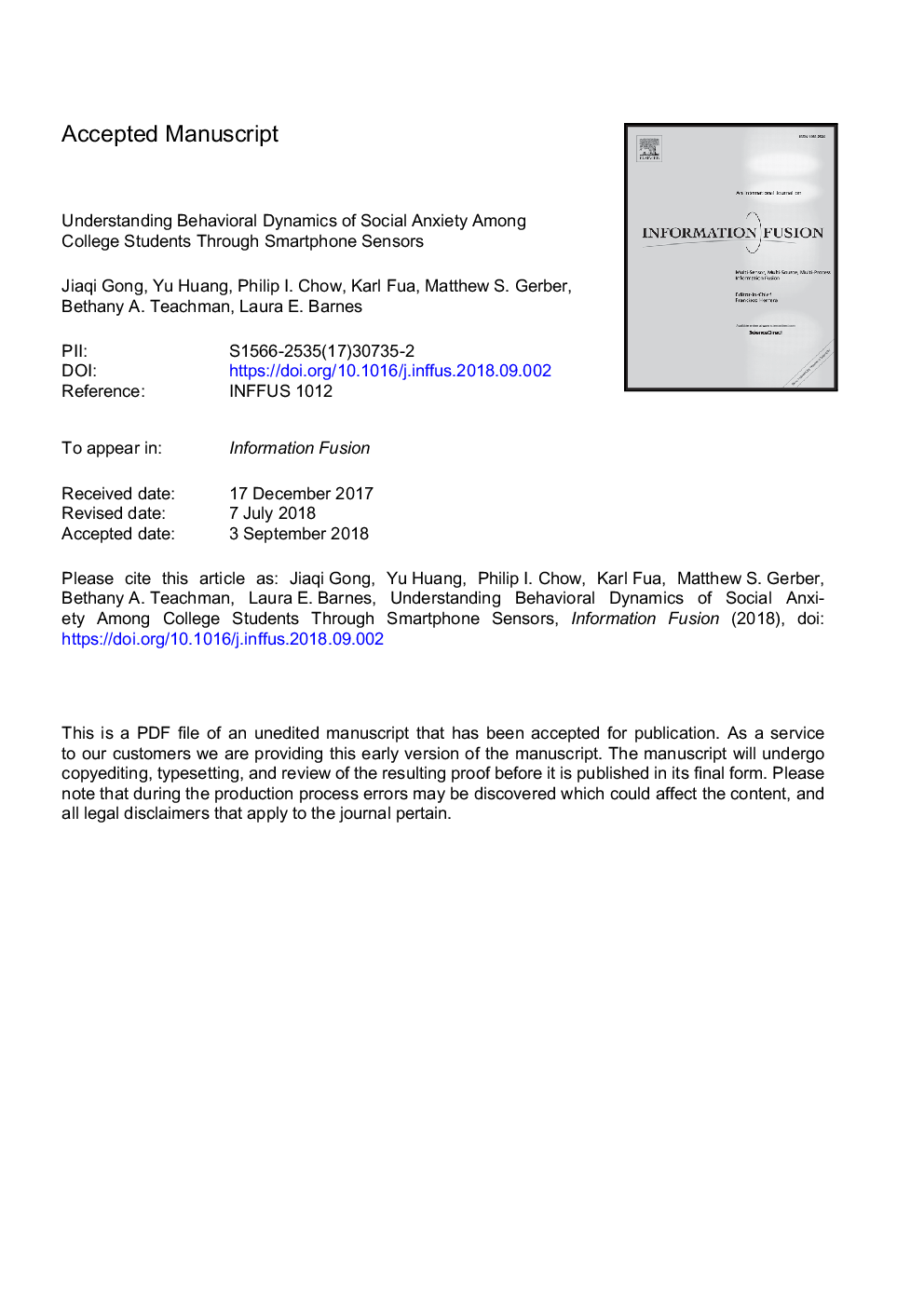| Article ID | Journal | Published Year | Pages | File Type |
|---|---|---|---|---|
| 11016434 | Information Fusion | 2019 | 40 Pages |
Abstract
The way people use smartphones provides a window into the relationship between behaviors and mental health. This relationship is of particular significance to individuals with elevated social anxiety, as it helps to reveal when and where their stress increases in relation to social interactions, ultimately leading to more precise treatment delivery and interventions. In this collaboration between engineers and psychologists, we present the first study to use smartphone sensors to examine socially anxious individuals' fine-grained behaviors around periods in which they engage in some form of social interaction, and how these behaviors differ as a function of location (e.g., at home, at work, or at an unfamiliar location). In a two-week study of 52 college students, we show that there is a significant difference in behaviors for individuals based on social anxiety levels and locations, in that individuals higher (vs. lower) in social anxiety symptoms exhibit more movement (as tracked by the accelerometer) around the time of phone calls, especially in an unfamiliar location (i.e., not home or at work). Finally, we discuss the implications of these findings for developing better interventions for socially anxious individuals.
Related Topics
Physical Sciences and Engineering
Computer Science
Computer Vision and Pattern Recognition
Authors
Jiaqi Gong, Yu Huang, Philip I. Chow, Karl Fua, Matthew S. Gerber, Bethany A. Teachman, Laura E. Barnes,
